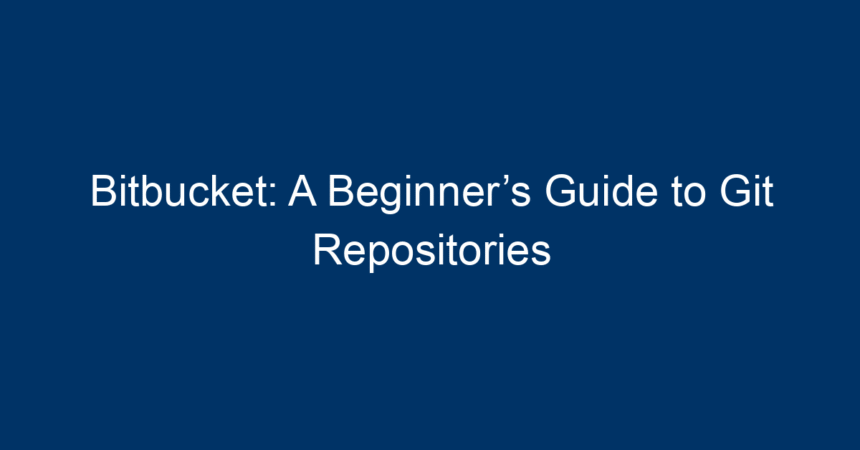In the ever-evolving landscape of software development, efficient collaboration and seamless version control are crucial. For developers and teams looking to amplify their workflow, Bitbucket stands out as a powerful tool. Offering robust Git repository hosting, Bitbucket enables teams to manage their codebase efficiently while simplifying collaborative efforts. This guide will walk you through the essentials of Bitbucket, catering specifically to beginners and providing the foundational knowledge required to harness its full potential.
What is Bitbucket?
Bitbucket is a web-based platform that provides Git repository hosting and version control. Initially launched as a platform for Mercurial repositories, it has since transitioned to Git, aligning with industry standards. Managed by Atlassian, Bitbucket integrates seamlessly with other popular tools like Jira and Confluence, making it an ideal choice for teams already utilizing Atlassian’s suite of products.
Key Features of Bitbucket
-
Git Repository Hosting: Bitbucket allows you to create repositories that can store your project’s code, providing a central location for development.
-
Collaboration Tools: With built-in features for code review and collaboration, Bitbucket simplifies the process of team work on projects.
-
Continuous Integration/Continuous Deployment (CI/CD): Bitbucket Pipelines provides tools for automating builds, tests, and deployments.
-
Integration Capabilities: Bitbucket easily integrates with third-party services and tools, enhancing functionality and efficiency.
- User Permissions: Manage who can view or edit the repository with robust access controls.
Getting Started with Bitbucket
Creating Your Bitbucket Account
To start using Bitbucket, you first need to create an account.
- Visit the Bitbucket Website: Head to the Bitbucket website.
- Sign Up: Click on the sign-up button, and you’ll have the option to register using your email address or through other social accounts (e.g., Google).
- Check Your Email: Confirm your email address to activate your account.
Navigating the Bitbucket Interface
Once you’ve created your account, familiarize yourself with the Bitbucket interface.
- Dashboard: The main dashboard provides an overview of your repositories and their activities.
- Repositories Tab: Here, you can create new repositories and view existing ones.
- Pull Requests & Issues: This section allows for managing code reviews and tracking issues related to your projects.
Creating a Git Repository on Bitbucket
Now that you understand the interface, it’s time to create your first Git repository.
Step-by-Step: Create a Repository
- Go to the Repositories Tab: Click on "Create" and select "Repository."
- Repository Settings: Fill out the form with details such as the repository name, description, and whether it will be public or private.
- Choose a Version Control System: Select "Git" as your version control system.
- Create Repository: Click on the "Create repository" button to finalize your setup.
Cloning Your Repository
After creating your repository, you’ll want to clone it to your local machine.
- Copy the Clone URL: From your newly created repository, find the clone URL.
-
Use Git Command: Open your terminal and run:
bash
git clone - Replace
<your-clone-url>with the URL you’ve copied.
Working with Git in Bitbucket
Understanding Git basics is crucial when using Bitbucket, so let’s cover some essential Git commands.
Common Git Commands
-
git add: Stages your changes for the next commit.
bash
git add . -
git commit: Records the changes to the repository.
bash
git commit -m "Your commit message" -
git push: Uploads your changes to Bitbucket.
bash
git push origin main -
git pull: Retrieves updates from the remote repository.
bash
git pull origin main
Branching and Merging
Branching is a powerful feature in Git that allows you to work on features independently.
-
Create a Branch: Use the following command:
bash
git checkout -b feature/your-feature-name -
Make Changes: Work on your feature and commit your changes.
-
Merge Changes: Once your feature is ready, switch back to the main branch and merge:
bash
git checkout main
git merge feature/your-feature-name
Utilizing Bitbucket’s Collaboration Features
Bitbucket shines in fostering collaboration among developers. Here’s how to effectively use its collaboration tools.
Pull Requests
Pull requests are essential for reviewing code before merging it into the main branch.
- Create a Pull Request: Navigate to the "Pull requests" section in your repository.
- Select the Branch to Merge: Choose your feature branch and the main branch.
- Submit: Write a description and submit the pull request for review.
- Review and Merge: Team members can comment on the code, suggest changes, and approve the pull request before merging.
Issue Tracking
Bitbucket includes an issue tracker to log bugs and tasks.
- Create an Issue: Go to the "Issues" tab and click "Create Issue."
- Fill Out Details: Provide information about the issue, including a description, type, and priority.
- Assign Team Members: Assign issues to team members for accountability and progress tracking.
Integrating CI/CD with Bitbucket Pipelines
Bitbucket Pipelines offers a great way to automate your development workflow. Here’s how to set it up.
Setting Up a Pipeline
-
YAML Configuration: Create a
bitbucket-pipelines.ymlfile in the root of your repository to define your pipeline configurations.Example for a simple Node.js application:
yaml
image: node:14pipelines:
default:- step:
name: Build and Test
script:- npm install
- npm test
- step:
- Activate the Pipeline: Once you’ve pushed your changes, Bitbucket will automatically run the pipeline based on your configuration.
Benefits of Using Pipelines
- Automation: Reduces manual work by automating tests and deployments.
- Consistency: Ensures that similar processes are followed for every deployment.
- Quick Feedback: Provides immediate feedback on code quality through automated testing.
Conclusion: Take Your First Steps with Bitbucket
Bitbucket offers an array of features that make it an invaluable tool for developers and teams. By understanding how to create and manage Git repositories, utilize collaboration features, and integrate CI/CD through Bitbucket Pipelines, you’ll be well on your way to enhancing your development workflow.
Actionable Insights:
- Start a Project: Create your first repository and invite team members to collaborate.
- Explore Branching: Try creating branches for new features or bug fixes to see how Git can streamline your workflow.
- Automate with Pipelines: Implement a simple automated testing pipeline to experience the benefits of continuous integration.
With Bitbucket at your disposal, you’re equipped to tackle modern software development challenges with ease. Start exploring today!




